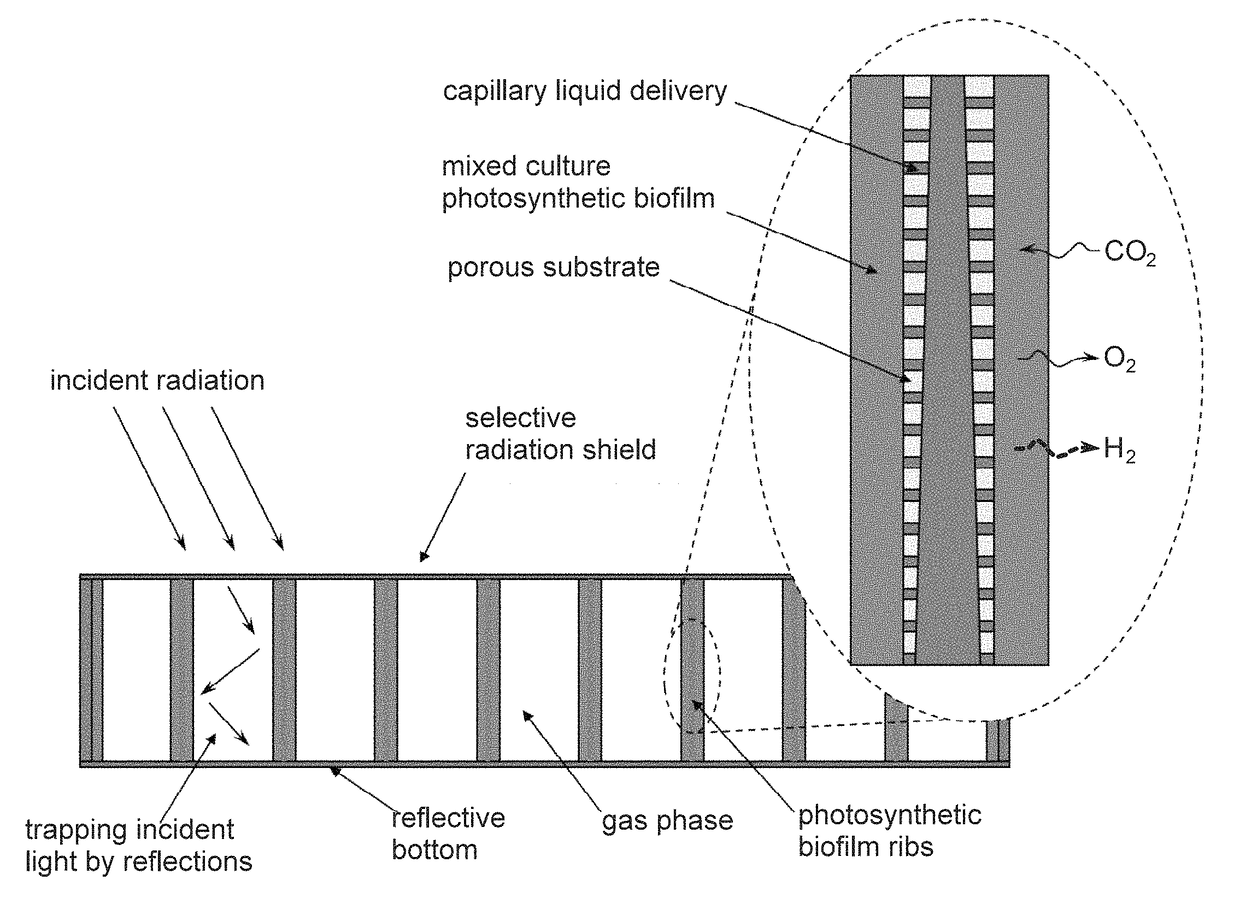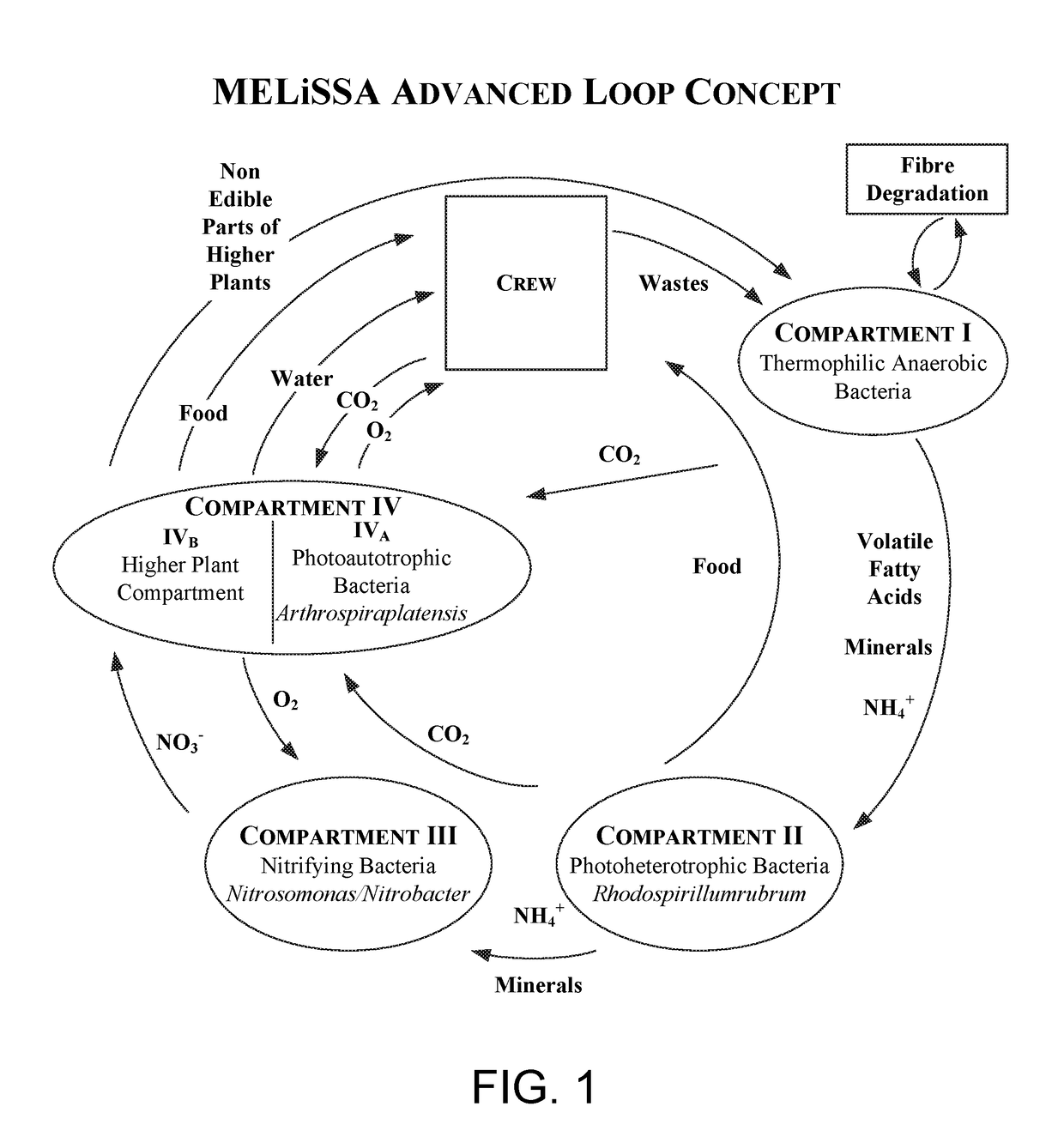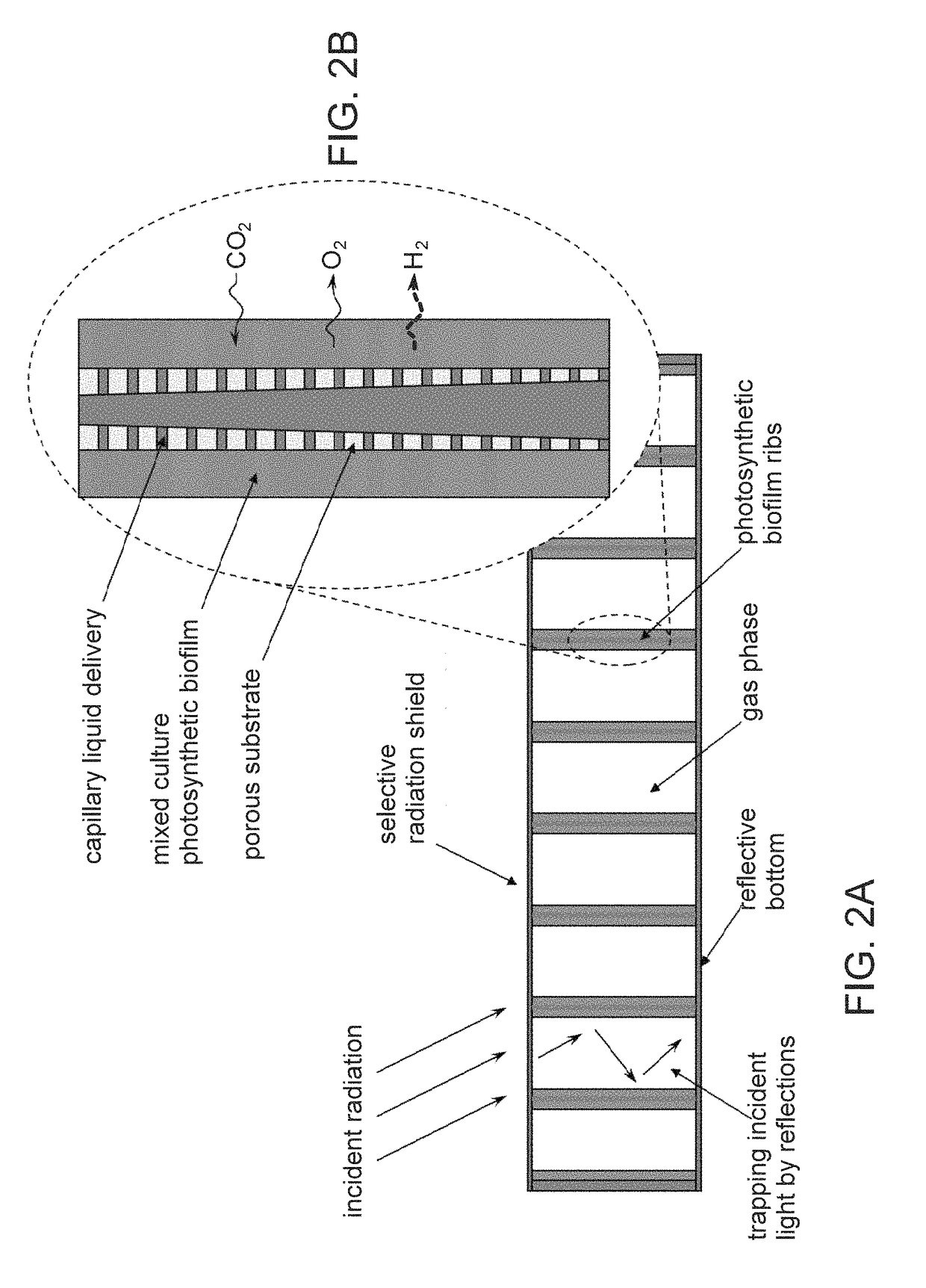Microorganism cultivation platform for human life support
a technology of life support and microorganisms, applied in the direction of microorganism fixing/supporting equipment, biochemical equipment and processes, biochemical equipment, etc., can solve the problems of limiting mission duration, food is uploaded from earth, and solid waste is not reused
- Summary
- Abstract
- Description
- Claims
- Application Information
AI Technical Summary
Benefits of technology
Problems solved by technology
Method used
Image
Examples
Embodiment Construction
[0032]In long term space exploration missions, mass minimization of life support systems will be a primary engineering challenge. Furthermore, photobioreactors for use in life support systems will require nutrient and gas exchange mechanisms that are independent of gravitational forces. In light of these challenges, we engineered a Surface-Adhering Bioreactor (SABR) for microorganism cultivation at dry biomass densities of about 100 g DW / L. Fluid transport within the SABR system is accomplished with capillary forces and evaporation rather than by inertial forces. This technology enables significant mass and energy savings compared to the centrifugal gas-lift technology used in the BIORAT photobioreactor.
[0033]FIGS. 2A and 2B show a schematic of the SABR system. Microorganisms are cultivated as a film on a hydrophilic, porous surface. Evaporation from the surface pulls fresh nutrient medium toward the biofilm. FIG. 2 shows an exemplary photosynthetic biofilm, in which the organisms u...
PUM
| Property | Measurement | Unit |
|---|---|---|
| irradiance | aaaaa | aaaaa |
| dry weight density | aaaaa | aaaaa |
| mass | aaaaa | aaaaa |
Abstract
Description
Claims
Application Information
 Login to View More
Login to View More - R&D
- Intellectual Property
- Life Sciences
- Materials
- Tech Scout
- Unparalleled Data Quality
- Higher Quality Content
- 60% Fewer Hallucinations
Browse by: Latest US Patents, China's latest patents, Technical Efficacy Thesaurus, Application Domain, Technology Topic, Popular Technical Reports.
© 2025 PatSnap. All rights reserved.Legal|Privacy policy|Modern Slavery Act Transparency Statement|Sitemap|About US| Contact US: help@patsnap.com



